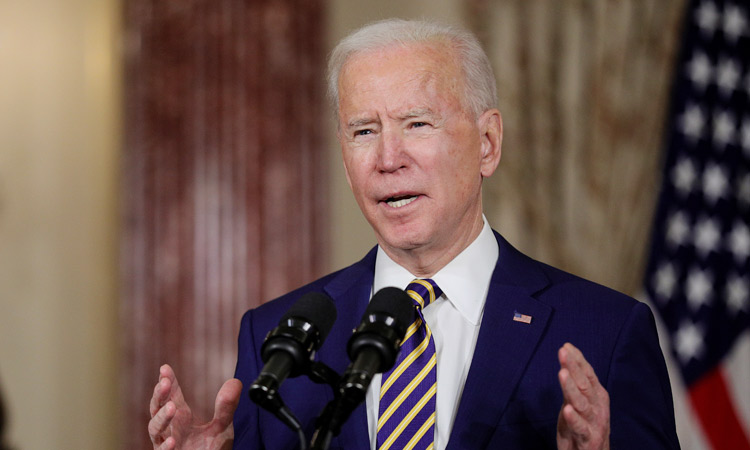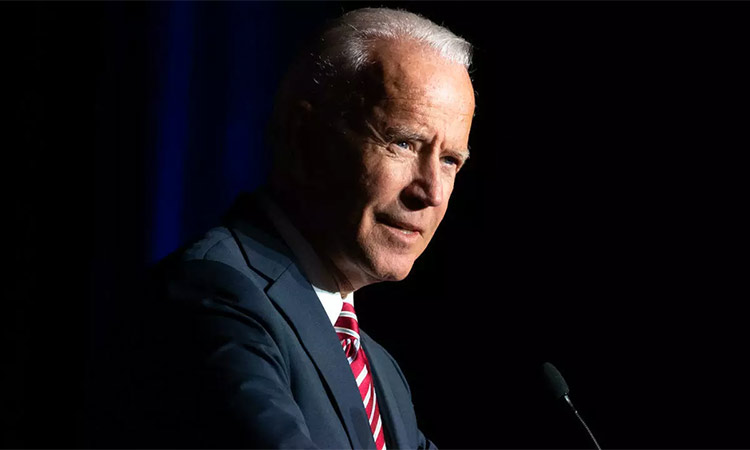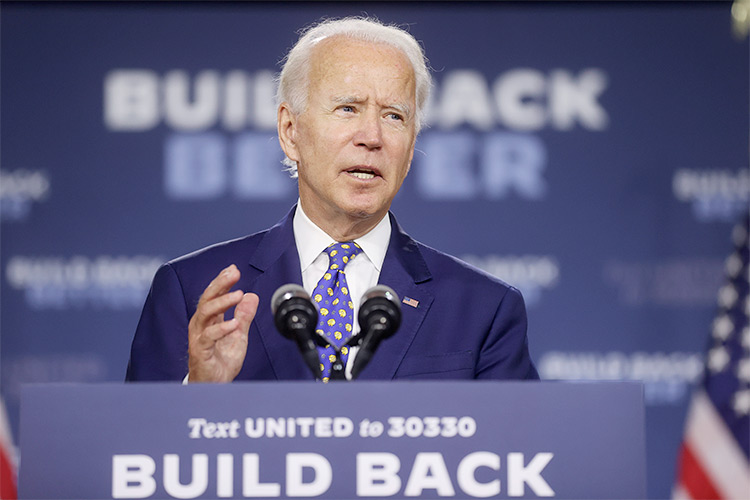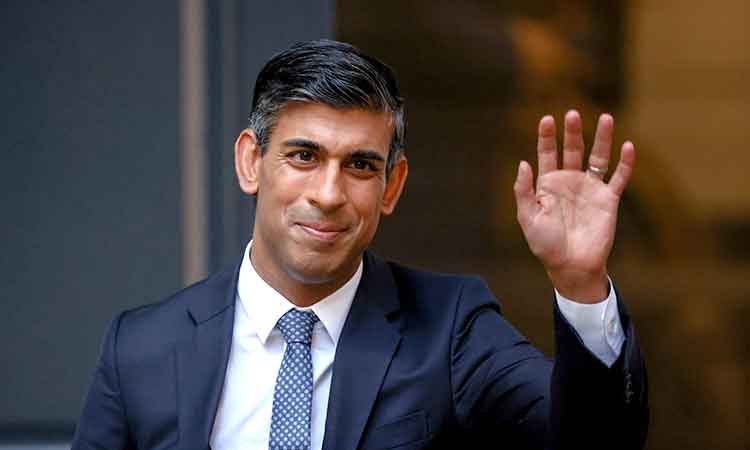Mexican immigrants’ hopes dim over new rule
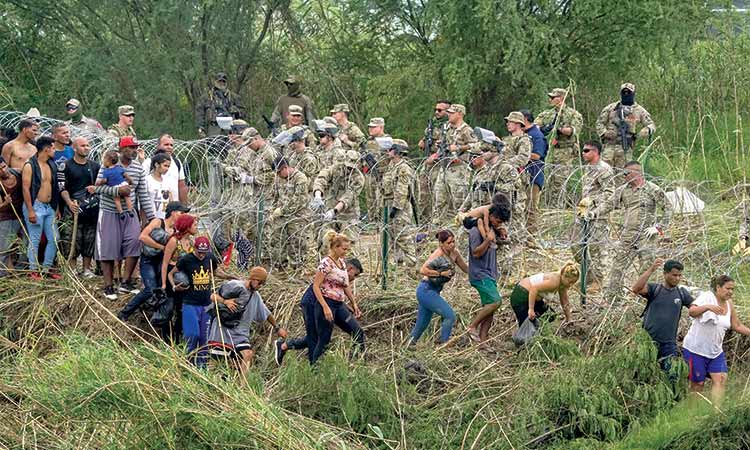
Texas National Guardsmen reinforce a stretch of razor wire as migrants try to cross into the US, on the banks of the Rio Grande, as seen from Matamoros, Mexico. Associated Press
The new system aims to get asylum-seekers to stop coming across the border illegally and start using an online system to book appointments to seek asylum at a ports of entry, but many migrants weren’t sure whether to trust it. Some, including children, paced along a Mexico-US border strung with barbed wire and bolstered by troops, unsure of where to go or what to do next. Others settled into shelters, determined to secure an appointment that can take months.
Meanwhile, the administration was dealt a potentially serious legal setback when a federal judge temporarily blocked its attempt to release migrants more quickly when Border Patrol holding stations are full.
At Matamoros, across the Rio Grande from Brownsville, Texas, migrant families hesitated only briefly as the deadline passed and asylum restrictions shifted before entering the waters of the Rio Grande from Mexico, holding cell phones above the water to light the way toward the US.
US authorities shouted for the migrants to turn back. “Be careful with the children,” an official shouted through a megaphone. “It is especially dangerous for the children.”
The expired rule, known as Title 42, was in place since March 2020. It allowed border officials to quickly return asylum seekers back over the border on grounds of preventing the spread of COVID-19.
While Title 42 prevented many from seeking asylum, it carried no legal consequences, encouraging repeat attempts. After Thursday, migrants face being barred from entering the US for five years and possible criminal prosecution.
“I don’t know what’s going to happen,” said Jhoan Daniel Barrios, a former military police officer from Venezuela as he paced with two friends along the border in Ciudad Juárez, across from El Paso, Texas, looking for a chance to seek refuge in the US.
“We don’t have any money left, we don’t have food, we don’t have a place to stay, the cartel is pursuing us,” said Barrios, whose wife was in US custody. “What are we going to do, wait until they kill us?”
Nearby, at an outdoor encampment of migrants beside a border bridge, cell phones were alight with attempts to book an asylum appointment online through an app administered by US Customs and Border Protection.
“There’s no other way to get in,” said Venezuelan Carolina Ortiz, accompanied by her husband and children, ages 1 and 4. Others in the camp had the same plan: keep trying the app.
At the US border with Tijuana, as Title 42 expired, there was no visible reaction among hundreds of migrants who were in US custody between two border walls, many of them for days with little food. They slept on the ground under bright lights in cool spring air. Shelters across Tijuana were filled with an estimated 6,000 migrants.
It was not clear how many migrants were on the move or how long the surge might last. By Thursday evening, the flow seemed to be slowing in some locations, but it was not clear why, or whether crossings would increase again.
A US official reported the Border Patrol stopped some 10,000 migrants on Tuesday – nearly twice the average daily level from March and only slightly below the 11,000 figure that authorities have said is the upper limit of what they expect after Title 42 ends.
More than 27,000 people were in US Customs and Border Protection custody, the official said.
“Our buses are full. Our planes are full,” said Pedro Cardenas, a city commissioner in Brownsville, as recent arrivals headed to locations across the US.
The administration hopes that a new system will be more orderly, and help some migrants to seek asylum in Canada or Spain instead of the US. But Biden has conceded the border will be chaotic for a while. Immigrant advocacy groups have threatened legal action. And migrants fleeing poverty, gangs and persecution in their homelands are still desperate to reach US soil at any cost.
Holding facilities along the border already were far beyond capacity. But late on Thursday, US District Judge T. Kent Wetherell, an appointee of President Donald Trump, halted the administration’s plan to begin releasing migrants with notices to report to an immigration office in 60 days when holding centres reach 125% capacity, or where people are held an average of 60 hours. The quick releases were to also be triggered when authorities stop 7,000 migrants along the border in a day.
In a statement, Customs and Border Protection said it would comply with the court order, while calling it a “harmful ruling that will result in unsafe overcrowding ... and undercut our ability to efficiently process and remove migrants.”
Weatherell blocked the releases for two weeks and scheduled a May 19 hearing on whether to extend his order.
Homeland Security Secretary Alejandro Mayorkas had already warned of more crowded Border Patrol facilities to come.
“I cannot overstate the strain on our personnel and our facilities,” he told reporters Thursday.
On Wednesday, Homeland Security announced a rule to make it extremely difficult for anyone who travels through another country, like Mexico, or who did not apply online, to qualify for asylum, with few exceptions. It also introduced curfews with GPS tracking for families released in the US before initial asylum screenings.
Minutes before the new rule took effect, advocacy groups sued to block it.
The lawsuit, filed in a federal court in San Francisco by the Center for Gender & Refugee Studies and other groups, alleges the Biden administration “doubled down” on a policy proposed by President Donald Trump that the same court rejected. The Biden administration has said its new rule is substantially different.
The administration also said it is beefing up the removal of migrants found unqualified to stay in the US on flights like those that sent nearly 400 migrants home to Guatemala from the US on Thursday.
Among them was Sheidi Mazariegos, 26, who arrived with her 4-year-old son just eight days after being detained near Brownsville.
“I heard on the news that there was an opportunity to enter, I heard it on the radio, but it was all a lie,” she said. Smugglers got her to Matamoros and put the two on a raft. They were quickly apprehended by Border Patrol agents.
Mazariegos said she made the trek because she is poor and hoped to reunite with her sisters living in the US.
Mexican President Andrés Manuel López Obrador noted an uptick in smugglers at his country’s southern border offering to take people to the United States, and said they were telling migrants the US border was open.
At the same time, the administration has introduced expansive new legal pathways into the US.
Up to 30,000 people a month from Haiti, Cuba, Nicaragua and Venezuela can enter if they apply online with a financial sponsor and enter through an airport. Processing centres are opening in Guatemala, Colombia and elsewhere. Up to 1,000 can enter daily though land crossings with Mexico if they snag an appointment on an online app.
Associated Press
